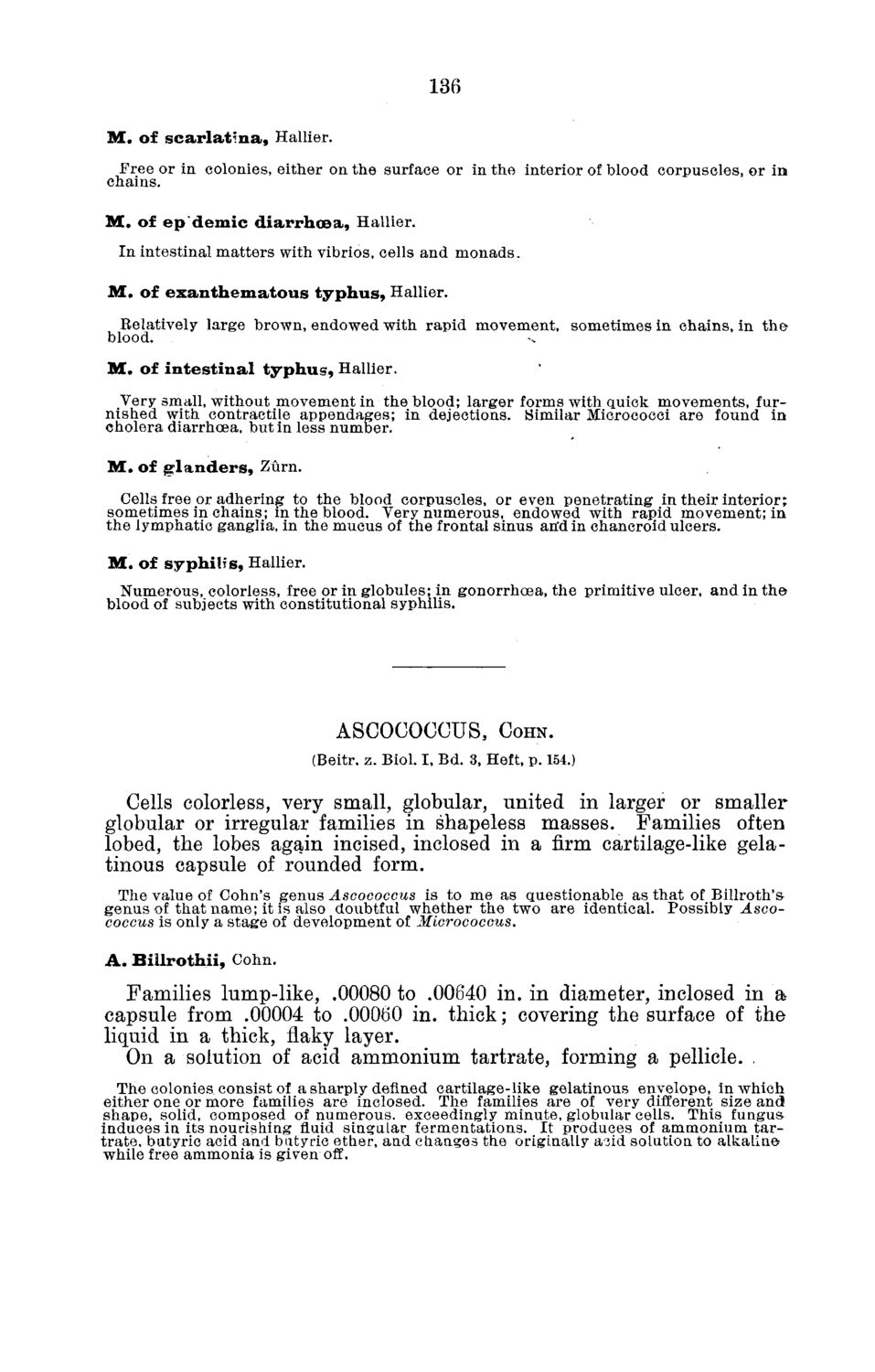| |
| |
Caption: Board of Trustees Minutes - 1882
This is a reduced-resolution page image for fast online browsing.

EXTRACTED TEXT FROM PAGE:
136 M . of s c a r l a t i n a , Hallier. Free or in colonies, either on the surface or in the interior of blood corpuscles, or in chains. M . of e p d e m i c d i a r r h o e a , Hallier. In intestinal matters with vibrios, cells and monads. M . of e x a n t h e m a t o u s t y p h u s , Hallier. Relatively large brown, endowed with rapid movement, sometimes in chains, in t h e blood. M . of i n t e s t i n a l t y p h u s , Hallier. Very small, without movement in the blood; larger forms with quick movements, furnished with contractile appendages; in dejections. ISimilar Micrococci are found in cholera diarrhoea, but in less number. M . of g l a n d e r s , Zurn. Cells free or adhering to the blood corpuscles, or even penetrating in their interior; sometimes in chains; in the blood. Very numerous, endowed with rap.id movement; in the lymphatic ganglia, in the mucus of the frontal sinus and in chancroid ulcers. M . of s y p h i l i s , Hallier. Numerous, colorless, free or in globules; in gonorrhoea, the primitive ulcer, and in the blood of subjects with constitutional syphilis. ASCOCOCCUS, COHN. (Beitr. z. Biol. I, Bd. 3, Heft, p. 154.) Cells colorless, very small, globular, united in larger or smaller globular or irregular families in shapeless masses. Families often lobed, the lobes again incised, inclosed in a firm carfcilage-like gelatinous capsule of rounded form. The value of Cohn's genus Ascococcus is to me as questionable as that of Billroth'sgenus of that name; it is also doubtful whether the two are identical. Possibly Ascococcus is only a stage of development of Micrococcus. A . B i l l r o t h i i , Cohn. Families lump-like, .00080 to .00640 in. in diameter, inclosed in a capsule from .00004 to .00060 in. thick; covering the surface of the liquid in a thick, flaky layer. On a solution of acid ammonium tartrate, forming a pellicle. . The colonies consist of a sharply defined cartilage-like gelatinous envelope, in which either one or more families are inclosed. The families are of very different size and shape, solid, composed of numerous, exceedingly minute, globular cells. This fungusinduces in its nourishing fluid singular fermentations. It produces of ammonium tartrate, butyric acid and butyric ether, and changes the originally aoid solution to alkalinewhile free ammonia is given off.
| |